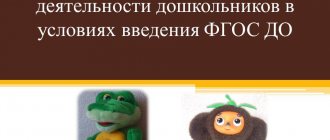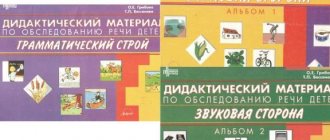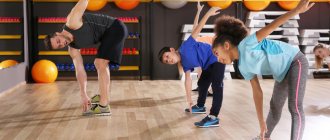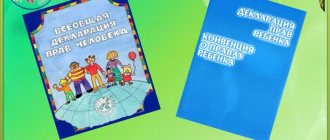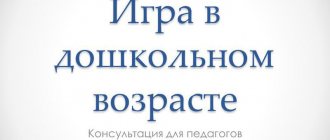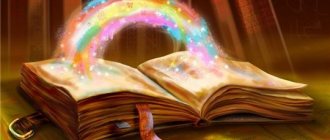Productive activities for preschoolers
Not every child’s activity leads to a visual product. And the game can please you with the results. For example, in a role-playing game, a child can learn to set the table or understand how shopping occurs in a store. During the game, communication skills develop, children find their friends. These are all important results. But not substantive, not material.
Productive species include:
- Visual activities
- Construction
- Needlework
It is possible that some parents are hesitant to call the result that their child gets after experimenting with paints or connecting some parts of a construction set a product. From the point of view of qualitative characteristics, the result performed by a preschooler is often rather weak... Moreover, adults need to remember that the child demonstrates everything he does with the desire to hear support and praise, and not criticism.
Productivity of fine arts and crafts
Fine arts include drawing, modeling and decorative arts. This could be making appliques and other crafts. Handicraft is also close to this type, although it requires more technical skills, and therefore is available already at older preschool age.
As soon as a child of three or four years old sees a certain object in his scribbles, we can assume that he has created his first product. This means that the child did not just randomly draw on the sheet. He had a plan! And what happened is age appropriate.
In middle preschool age, children draw quite recognizable images. Figures from plasticine are not yet made, but simple forms are already quite realizable. Every child can make an apple, a cucumber, a plate.
Children 6-7 years old have fully developed drawing and modeling skills. Assiduous, attentive children are interested in creating appliqués and are interested in knitting and sewing. If someone in the family is interested in needlework, older preschoolers will definitely get involved in this activity.
Product of activity in design
When classifying design as a productive activity, it is important to keep in mind that the product in this case is temporary. It is rare that a structure can be preserved for a long time. Perhaps an older preschooler will make a car, a crane, or a robot according to a diagram from metal or plastic parts, and he will want to keep the successful model for a certain time.
Any design has a short life. Children build, assemble an object, look at it, encourage others to look, expect to hear praise and... soon destroy it in order to create something else.
But it is obvious that this activity is carried out by the child for the sake of a specific product. This is exactly the type of activity that gives the preschooler the opportunity to see visual achievements.
Bottom line
As you can see, productive skills developed in preschool age have a lot of advantages:
- development of the pupil’s aesthetic and moral feelings;
- improving his mental and physical aspects;
- formation of concepts about space, form, composition;
- acquisition of additional skills in working with tools and office supplies;
- development of perseverance, hard work, logic.
And in order to achieve all this, you don’t need to do much: provide the baby with all the necessary materials and together with him try to make a craft, sculpt a figurine or draw a picture.
This will bring pleasure to both you and your child, and will help him take another step towards his successful education. leave a comment
Psychological characteristics of a preschool child
Preschool childhood is the period from the moment of awareness of oneself as a member of human society (from about 2-3 years) to the moment of systematic education (6-7 years). In this process, social factors in personality formation play a decisive role. In preschool childhood, the basic individual psychological characteristics of the child are formed, and conditions are created for the formation of social and moral characteristics of the individual.
This phase of childhood is characterized by:
- As a last resort, the child needs the help of an adult to meet the basic needs of life;
- the maximum possible role of the family in satisfying all basic needs (material, spiritual, cognitive);
- minimal possibility of self-protection from harmful environmental influences.
Appeal. By the age of six, a child’s vocabulary has expanded so much that he can easily explain to another person everything that relates to everyday life and his area of interest. While a typically developing three-year-old child uses up to 500 or more words, a six-year-old child uses between 3,000 and 7,000 words. A six-year-old child's vocabulary consists of nouns, verbs, pronouns, adjectives, numerals and connectives.
Sensory development. A child attending kindergarten not only distinguishes colors, shapes, sizes of objects and their position in space, but can also correctly name the proposed colors and shapes of objects and correctly distribute objects by size. He can also draw simple shapes and color them in a specific color. It is very important that the child can establish the identity of objects with a certain norm. Standards are humanity’s models of the main varieties of qualities and properties of objects. Thus, the standards of perception (sensory standards) are: colors of the spectrum, white and black colors, all kinds of shapes, sound levels, time intervals, etc. They arose during the history of human culture and are used by people as models, standards, with the help of which the compliance of perceived reality with one or another standard from a system of ordered standards is determined.
If a child can correctly name the color and shape of an object, if he can correlate the perceived quality with the norm, then we can assume that he can establish identity (the ball is round), partial similarity (the apple is round, but not perfectly similar to the ball), dissimilarity (the ball and cube). By carefully examining, touching or listening, the child performs correlative actions and traces the connection between what he perceives and the standard.
Development of thinking. A feature of a child’s healthy psyche is cognitive activity. A child’s curiosity is constantly aimed at understanding the world around him and forming his own picture of this world. The child plays, experiments, tries to establish cause-and-effect relationships and dependencies. For example, he himself can understand which objects will sink and which will float. He has many questions about the phenomena of life. The more intellectually active a child is, the more questions he asks and the more varied these questions become.
Development of attention. The child’s cognitive activity in exploring the world around him organizes his attention to the objects under study for quite a long time, until his interest wanes. If a six-year-old child is engaged in a game that is important to him, he can play for two or even three hours without being distracted. He can focus on productive activities (drawing, designing, work that is meaningful to him) for the same amount of time. However, such results of concentration are a consequence of interest in what the child is doing. He will languish, be distracted, and feel completely miserable when he has to engage in activities that are not suitable for him or that he does not like at all.
Memory development. Preschool age is an age of intensive memory development. It is generally accepted that memory is the leading cognitive process. In fact, a preschool child masters the language to such an extent that he becomes a true native speaker of his native language. Memory records and stores events and information that are significant to the child. Preschool childhood leaves many memories that will last a lifetime.
A six-year-old child can already voluntarily remember objects. When memorization becomes a condition for successful play or is important for the realization of a child’s aspirations, he easily remembers words in a certain order, poems, sequences of actions, and so on. A six-year-old child is already consciously able to use memorization techniques. He repeats what needs to be remembered, tries to understand, assimilate what was memorized in a certain order. However, involuntary memorization remains more productive. Here, too, everything is determined by the child’s interest in what he is doing.
Development of imagination. A six-year-old child can create in his imagination many situations in which he appears at his most beautiful. Having formed in the game, the imagination moves into other types of activities. This is most clearly manifested in drawing and in writing children's rhymes and fairy tales. Here there is great variability in the nature of children's creativity: some children are focused on recreating real reality, others on creating fantastic images and situations. Fantasy plays a greater role in the life of a child than in the life of an adult; it manifests itself much more often and allows more frequent violations of the reality of life. The tireless work of imagination is the main way a child learns and masters the world around him; it is a way to go beyond the limits of narrow personal experience.
The need for productive activity
The purpose of the classes is the comprehensive development and education of a child of the preschool age group. Children develop in many ways, so it is important to include all types of productive activities of preschoolers in classes, without focusing only on drawing or modeling. Classes should be conducted in a playful way, and not “under pressure”; the child should realize that this is fun, and in addition, at the end of the work he will be proud of his product. At the same time, he will gradually learn the need to listen carefully to the teacher and do everything necessary to get results.
All over the world, experts have studied the productive activity of preschoolers and came to the conclusion that it is capable of developing the following qualities in children:
- Good creative imagination, a thinking mechanism, that is, the ability to think logically, compare, analyze and synthesize.
- Purposefulness, perseverance and perseverance.
- Good mental abilities, since the productive activities of preschoolers are cognitive activities.
- Fine motor skills of fingers and hand muscles.
- Methods of productive activity for preschoolers are aimed at conveying to children the need for independent work.
- Curiosity, inquisitiveness and initiative.
Classes also have a positive effect on children’s discipline; teachers noted a good connection between productive activities and sensory education. That is, in order for a child to have a good idea of an object, he must know what it looks like, its color, use, size and location in space.
During the lessons, all the qualities are revealed, primarily the mental and physical abilities of the child, and the teachers know exactly which child and what needs to be done more, they give practical advice to parents.
Productive creative activity of preschoolers provides practice and skills that will be needed for further education and work. For example, to create an applique you need to make some effort, think carefully about the placement of objects, arrange them correctly, and this requires creative actions. During classes, children gain experience in independent work.
An integrated approach is well implemented in the productive activities of preschoolers. In addition, kids are able to completely relax, and this means getting rid of all sorts of fears of society. Children, independently creating a product, can realize their ideas about a particular object in a model, and receive a material embodiment of an imaginary design.
